
St. John's: The Caribbean Jewel of Antigua and Barbuda
Discover St. John's in Antigua and Barbuda, where history meets beautiful beaches, vibrant markets, and delicious Caribbean cuisine.
St. John's, the vibrant capital of Antigua and Barbuda, is a true gem of the Caribbean. This city is a blend of colonial architecture, bustling markets, and turquoise waters. Visitors can explore the colorful streets lined with pastel-hued buildings that showcase a rich history and culture. The city is also home to the impressive St. John's Cathedral, a must-see landmark with its twin towers and baroque-style architecture. For those looking to indulge in some retail therapy, Heritage Quay and Redcliffe Quay offer a variety of shops, boutiques, and local crafts. These areas are perfect for picking up unique souvenirs, from handmade jewelry to local spices. Food lovers will enjoy the diverse culinary scene, with restaurants serving up everything from fresh seafood to traditional Caribbean dishes. Nature enthusiasts will find plenty to do in St. John's. The city is a gateway to some of the island's most beautiful beaches, including Dickenson Bay and Fort James Beach. These sandy shores are ideal for swimming, sunbathing, or simply relaxing under the Caribbean sun. Additionally, a visit to the Museum of Antigua and Barbuda provides an insightful look into the island's past, showcasing artifacts and exhibits that tell the story of its indigenous people, colonial history, and natural environment.
Local tips in St. John's
- Visit the local markets early in the morning for the freshest produce and best selection of local goods.
- Carry some cash, as not all vendors accept credit cards, especially in smaller shops and markets.
- Wear comfortable shoes for exploring the cobblestone streets and historical sites.
- Try local dishes like fungi and pepperpot for an authentic Caribbean culinary experience.
- Check the cruise ship schedule if you prefer a less crowded experience at popular tourist spots.
St. John's: The Caribbean Jewel of Antigua and Barbuda
St. John's, the vibrant capital of Antigua and Barbuda, is a true gem of the Caribbean. This city is a blend of colonial architecture, bustling markets, and turquoise waters. Visitors can explore the colorful streets lined with pastel-hued buildings that showcase a rich history and culture. The city is also home to the impressive St. John's Cathedral, a must-see landmark with its twin towers and baroque-style architecture. For those looking to indulge in some retail therapy, Heritage Quay and Redcliffe Quay offer a variety of shops, boutiques, and local crafts. These areas are perfect for picking up unique souvenirs, from handmade jewelry to local spices. Food lovers will enjoy the diverse culinary scene, with restaurants serving up everything from fresh seafood to traditional Caribbean dishes. Nature enthusiasts will find plenty to do in St. John's. The city is a gateway to some of the island's most beautiful beaches, including Dickenson Bay and Fort James Beach. These sandy shores are ideal for swimming, sunbathing, or simply relaxing under the Caribbean sun. Additionally, a visit to the Museum of Antigua and Barbuda provides an insightful look into the island's past, showcasing artifacts and exhibits that tell the story of its indigenous people, colonial history, and natural environment.
When is the best time to go to St. John's?
Iconic landmarks you can’t miss
Heritage Quay Complex
Discover the vibrant Heritage Quay Complex in St. John's, where shopping meets local culture and unforgettable dining experiences await.

Nelson's Dockyard
Explore the historical marvel of Nelson's Dockyard in Antigua, a UNESCO World Heritage site rich in maritime history and breathtaking landscapes.

Redcliffe Quay
Explore Redcliffe Quay, a vibrant shopping hub in St. John's, Antigua, offering local crafts, dining, and a taste of Caribbean culture.

Devil's Bridge National Park
Discover the breathtaking natural beauty of Devil's Bridge National Park, a historical landmark with stunning ocean views and unique rock formations.

Big Banana
Discover the vibrant flavors of the Caribbean at Big Banana, St. John's premier restaurant and bar, perfect for pizza lovers and cocktail enthusiasts alike.

The Larder
Experience the vibrant flavors of Antigua at The Larder, a charming café offering delicious local and international dishes in a warm atmosphere.

The Blockhouse
Explore The Blockhouse in Piccadilly, a historical marvel with stunning views and rich cultural significance, perfect for history buffs and travelers.

Cutie's
Explore the vibrant culinary scene of St John's at Cutie's Restaurant, where authentic Caribbean flavors come alive in a warm and welcoming atmosphere.

VC Bird Monument
Discover the VC Bird Monument, a stunning tribute to Antigua's first Premier, nestled in the heart of St. John's with rich history and beautiful surroundings.

Shoul's Toys, Gifts & Housewares
Explore the vibrant selection of toys, gifts, and housewares at Shoul's in St. John's, a unique shopping experience for all ages.

Dickenson Bay Beach
Explore Dickenson Bay Beach, a serene haven in Antigua with stunning sands, vibrant waters, and a rich cultural experience that awaits every tourist.

Museum of Antigua and Barbuda
Dive into the vibrant history and culture of Antigua and Barbuda at the Museum of Antigua and Barbuda, where the past comes alive through fascinating exhibits.

C&C Wine House
Discover the vibrant flavors of Antigua at C&C Wine House, where exquisite wines meet delightful local cuisine in a cozy atmosphere.
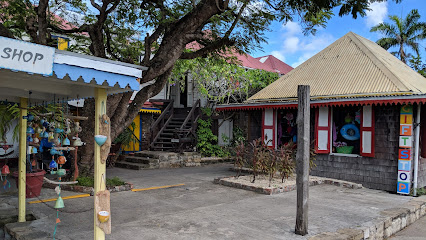
Fort James
Explore Fort James in St. John's, Antigua, a captivating historical landmark showcasing colonial architecture and stunning coastal views.
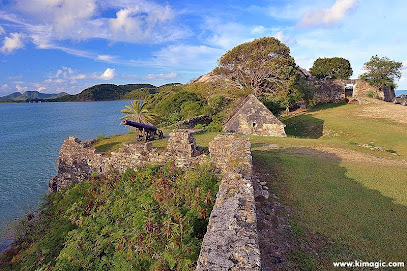
Saint John's Cathedral
Discover the architectural beauty and rich history of Saint John's Cathedral, a must-visit landmark in St. John's, Antigua and Barbuda.

Unmissable attractions to see
Nelson's Dockyard
Discover the heritage of Nelson's Dockyard, a UNESCO World Heritage Site in Antigua, rich in naval history and breathtaking coastal views.

Stingray City Antigua
Experience the thrill of swimming with stingrays in the crystal-clear waters of Antigua at Stingray City, a must-visit tourist attraction.

Devil's Bridge National Park
Explore the breathtaking beauty and historical significance of Devil's Bridge National Park in Antigua, a must-visit tourist attraction.

Sir Vivian Richards Stadium
Discover the vibrant atmosphere and rich cricketing heritage at Sir Vivian Richards Stadium in Antigua, a must-visit for sports enthusiasts.

Royalton Antigua, An Autograph Collection All-Inclusive Resort
Experience the perfect blend of luxury and adventure at Royalton Antigua in Five Islands village, where warm hospitality meets stunning Caribbean beauty.

Galleon Beach
Discover Galleon Beach, a stunning public beach in Antigua known for its pristine sands, crystal-clear waters, and vibrant atmosphere perfect for relaxation and adventure.

Pigeon Point Beach
Discover the serene beauty of Pigeon Point Beach in Antigua, where soft sands meet azure waters for the ultimate tropical getaway.

The Blockhouse
Discover the enchanting Blockhouse in Piccadilly, a historic site that reveals the rich heritage and cultural stories of the region.

Dickenson Bay Beach
Discover the enchanting beauty of Dickenson Bay Beach in Antigua - a perfect mix of relaxation and adventure in a tropical paradise.

Long Bay Beach
Experience the serene beauty of Long Bay Beach in Willikies, Antigua, where sun, sand, and sea come together for the perfect getaway.

Museum Of Antigua & Barbuda
Explore the fascinating history of Antigua and Barbuda at the Museum of Antigua & Barbuda, a cultural gem in St. John's.

Betty's Hope Historic Sugar Plantation
Experience the rich history of Antigua at Betty's Hope Historic Sugar Plantation, where the legacy of sugar production comes to life amidst stunning landscapes.

Saint John's Cathedral
Explore the breathtaking Saint John's Cathedral in Antigua, a stunning Gothic architectural marvel steeped in history and cultural significance.

King's Casino
Discover the excitement and vibrant nightlife at King's Casino in St. John's, Antigua, featuring gaming, dining, and non-stop entertainment.

Dow's Hill Interpretation Centre
Discover the beauty and history of Antigua at the Dow's Hill Interpretation Centre, a perfect blend of nature and heritage exploration.

Essential places to dine
Big Banana
Experience Caribbean flavors at Big Banana – a top restaurant and bar in St. John's known for its delicious pizzas and vibrant atmosphere.

Roti King
Experience authentic Caribbean flavors at Roti King in St. John's - where delicious rotis meet vibrant culture.

Hemingway's Caribbean Cafe
Experience authentic Caribbean dining at Hemingway's Caribbean Cafe in St. John's - a culinary gem offering delicious breakfast and lunch options.

Cutie's
Discover Cutie's in St. John's - where local flavors meet warm hospitality in a vibrant dining atmosphere.

Papa Zouk
Experience exquisite seafood dining at Papa Zouk in Dickenson Bay – where Caribbean flavors come alive!

C&C Wine House
Discover exquisite wines paired with Caribbean cuisine at C&C Wine House in Antigua - a delightful dining experience awaits!

Cheers Antigua
Experience authentic Caribbean flavors at Cheers Antigua in Heritage Quay - a grill paradise for food lovers!

Alligators Bar and Restaurant
Experience the vibrant flavors of Caribbean cuisine at Alligators Bar and Restaurant in St. John's – where every meal is a celebration.

Casa Roots - Beach - Food & Drinks
Discover exquisite flavors and stunning beach views at Casa Roots - your ultimate dining destination in Antigua.

New Thriving Restaurant
Experience the best of local cuisine at New Thriving Restaurant in St John's – where every meal tells a story.

Enzo's Restaurant
Experience the vibrant flavors of Antigua at Enzo's Restaurant – where local meets international cuisine in St. John's.

Cool Runnings Restaurant & Bar
Experience authentic Caribbean flavors at Cool Runnings Restaurant & Bar in St. John's - a vibrant dining destination for every traveler.

Paradise Cafe
Discover authentic Caribbean flavors at Paradise Cafe in St. John's - a culinary haven for food lovers visiting Antigua.

New Taste Of India
Experience authentic Indian flavors at New Taste Of India in St John's - where every dish tells a story of tradition and taste.

El Taco Loco
Discover authentic Mexican cuisine at El Taco Loco in St. John's—where every dish is a celebration of flavor.

Markets, malls and hidden boutiques
Shoul's Toys, Gifts & Housewares
Explore the vibrant offerings at Shoul's Toys, Gifts & Housewares in St. John's for unique souvenirs and delightful gifts that capture the spirit of Antigua.

The Cool and Smooth
Explore The Cool and Smooth in St. John's for a diverse selection of clothing, from casual to formal, capturing the vibrant spirit of the island.

Shoul's Chief Store
Explore Shoul's Chief Store in St. John's for unique Antiguan crafts, colorful souvenirs, and a taste of local culture.

Vendor's Mall
Discover a vibrant shopping experience at Vendor's Mall in St. John's, where local crafts meet international brands in a unique Caribbean setting.

Zemi Art Gallery
Explore Zemi Art Gallery in St. John's for unique handmade gifts and local artistry, celebrating Antigua's vibrant creative culture.

306 Antigua
Explore 306 Antigua for unique home goods and local treasures in St. John's, offering a delightful shopping experience for every visitor.

Exotic Antigua
Explore Exotic Antigua, a vibrant clothing store in St. John's offering unique local fashion and a taste of Caribbean style.

Pigotts Mall
Explore Pigotts Mall in St. John's for a unique selection of beauty supplies, cosmetics, and hair extensions that capture Caribbean flair.

Sunseakers
Discover stylish beachwear and casual clothing at Sunseakers in St. John's, Antigua—your ultimate shopping destination for tropical apparel.

Sea Island Trading Antigua
Discover unique home goods and handcrafted local treasures at Sea Island Trading Antigua, a charming store in St. John's.

Noreen Phillips Couturiere
Explore the exquisite designs and quality at Noreen Phillips Couturiere, a premier clothing store in St. John's offering unique fashion pieces.

268asia
Explore the vibrant fashion scene at 268asia, a premier clothing store in St. John's, offering unique styles and local flair.

Caribbean Waves
Discover the vibrant beachwear and unique souvenirs at Caribbean Waves in St. John's, where island spirit meets style.
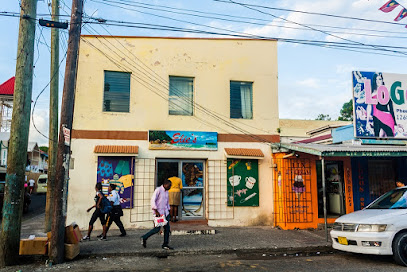
Chinatown Department Store
Explore the bustling Chinatown Department Store in St. John's, a vibrant hub for unique souvenirs and local culture, perfect for every tourist.
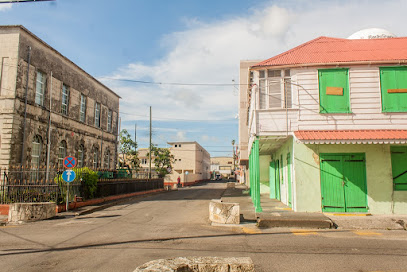
CARIBBEAN SHOP
Explore local flavors and essentials at the Caribbean Shop, a vibrant grocery store in the heart of St. John's, Antigua.

Essential bars & hidden hideouts
The Nest -Beach Bar, Antigua
Experience the flavors of Antigua at The Nest Beach Bar, where grilled delicacies meet breathtaking ocean views in a paradise setting.

Cheers Antigua
Discover the vibrant flavors of the Caribbean at Cheers Antigua, a top bar and grill in St. John's offering grilled delicacies and a lively atmosphere.
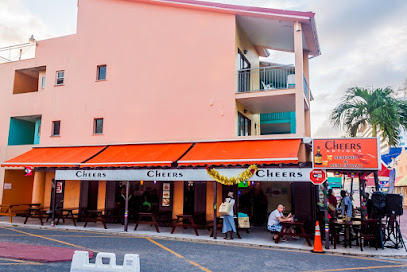
Alligators Bar and Restaurant
Experience the vibrant flavors of the Caribbean at Alligators Bar and Restaurant, a culinary haven in St. John's, Antigua.

Kon Tiki Bar and Grill
Experience the flavors of the Caribbean at Kon Tiki Bar and Grill, a premier dining spot in St. John's offering delicious grilled dishes and refreshing cocktails.

Mystic Beach | Bar and Restaurant
Discover the vibrant flavors of the Caribbean at Mystic Beach | Bar and Restaurant, where every meal is a feast for the senses against a stunning ocean backdrop.

Island B-Hive Sports Bar
Experience the vibrant Caribbean spirit at Island B-Hive Sports Bar, where delicious food meets a lively atmosphere in St. John's.

North268 Limited
Experience the ultimate grill dining at North268 Limited, where Caribbean flavors meet a warm and inviting atmosphere in St. Johns.

LA LOBA BAR
Experience the vibrant nightlife at LA LOBA BAR in St. John's, Antigua, where tropical cocktails meet a lively atmosphere!

WENDYS BAR
Experience the vibrant nightlife at Wendy's Bar in St. John's, where delicious drinks and the best fried chicken await.

Rum Runners By The Sea
Experience the vibrant atmosphere and stunning views at Rum Runners By The Sea, a must-visit coastal bar in St. John's, Antigua.

MARTA BAR
Experience the vibrant atmosphere of Marta Bar in St. John's, where delicious drinks and friendly vibes create unforgettable memories.

Man Cave Bar & Restaurant
Experience the vibrant flavors and atmosphere of Antigua at Man Cave Bar & Restaurant, your go-to grill destination for delicious food and drinks.

Julee's
Experience the lively atmosphere of Julee's, a must-visit bar in St John's, Antigua, offering delightful drinks and local charm.

Kennedy's Classic Bar & Deli
Discover the vibrant atmosphere and delicious offerings of Kennedy's Classic Bar & Deli in St John's, Antigua - a perfect blend of local culture and culinary delight.

EMMA'S BAR
Discover the vibrant atmosphere at Emma's Bar in St. John's, where refreshing drinks and Caribbean charm collide.

Local Phrases
-
- HelloWadadli
[wuh-dad-lee] - GoodbyeLeh-weh-go
[lay-weh-go] - YesYa
[yah] - NoNoh
[noh] - Please/You're welcomePleez/Tank yuh
[pleez/tank yuh] - Thank youTank yuh
[tank yuh] - Excuse me/SorryEgg-skews mi/Saari
[egg-skews mee/sa-ree] - How are you?Ow yuh duh?
[ow yuh doo] - Fine. And you?Fine. An yuh?
[fine. an yuh?] - Do you speak English?Yuh speak English?
[yuh speak ing-glish] - I don't understandMi nah ondahstand
[mee nah on-duh-stand]
- HelloWadadli
-
- I'd like to see the menu, pleaseAh wah si di menu, pleez
[ah wah see dee men-oo, pleez] - I don't eat meatMi nah eat meat
[mee nah eet meet] - Cheers!Cheres!
[cher-ees] - I would like to pay, pleaseMi wah pay, pleez
[mee wah pay, pleez]
- I'd like to see the menu, pleaseAh wah si di menu, pleez
-
- Help!Elp!
[elp] - Go away!Go weh!
[go way] - Call the Police!Call di police!
[call dee police] - Call a doctor!Call ah docta!
[call ah dock-ta] - I'm lostMi loss
[mee loss] - I'm illMi sick
[mee sik]
- Help!Elp!
-
- I'd like to buy...Ah wah buy...
[ah wah buy] - I'm just lookingMi just lukin
[mee just look-in] - How much is it?Ow much it is?
[ow much it is] - That's too expensiveDat too pricy
[dat too pry-see] - Can you lower the price?Yuh cud lowa di price?
[yuh kud low-ah dee pryce]
- I'd like to buy...Ah wah buy...
-
- What time is it?Wah time it is?
[wah time it is] - It's one o'clockIt wan o'cloc
[it wun oh-clok] - Half past (10)Haaf pas (10)
[hahf past ten] - MorningMawnin
[morn-in] - AfternoonAftanun
[af-ta-noon] - EveningIvinin
[eve-ning] - YesterdayYessiday
[yes-si-day] - TodayTuday
[too-day] - TomorrowTumara
[too-mar-ah] - 1Wan
[wun] - 2Tu
[too] - 3Tri
[tree] - 4Foh
[foh] - 5Fayv
[fayv] - 6Six
[siks] - 7Sevan
[sev-an] - 8Eyt
[ate] - 9Nain
[nayn] - 10Ten
[ten]
- What time is it?Wah time it is?
-
- Where's a/the...?Weh di...deh?
[weh dee...day] - What's the address?Wah di address?
[wah dee address] - Can you show me (on the map)?Yuh cud show mi (pan di map)?
[yuh kud show mee (pan dee map)] - When's the next (bus)?Wen di nex (bus)?
[wen dee neks (bus)] - A ticket (to ....)Ah ticket (to ....)
[ah ticket (to)]
- Where's a/the...?Weh di...deh?
History of St. John's
-
St. John's, the capital of Antigua and Barbuda, was founded in 1632 by English settlers. It quickly became a bustling port city due to its strategic location and natural harbor, which provided a safe haven for ships. The city's early years were marked by the establishment of sugar plantations, which fueled the local economy and led to the importation of enslaved Africans to work the fields.
-
The 18th century saw the rise of the sugar industry in St. John's, which became the economic backbone of the island. The city emerged as a central hub for the export of sugar, molasses, and rum. The wealth generated from the sugar trade led to the construction of grand Georgian-style buildings, many of which still stand today, adding to the city's historical charm.
-
Although Nelson’s Dockyard is located in English Harbour, its historical significance extends to St. John's. Named after Admiral Horatio Nelson, who was stationed in Antigua in the 1780s, the dockyard served as a crucial naval base for the British Royal Navy. The presence of the dockyard underscored St. John's importance as a military and trade port during the colonial era.
-
The abolition of slavery in 1834 was a monumental event in the history of St. John's. Enslaved Africans had long endured harsh conditions on the sugar plantations. The end of slavery led to significant social and economic changes, as freed individuals sought to establish new lives and livelihoods. The Moravian Church in St. John's played a pivotal role in educating and supporting the newly emancipated population.
-
St. John's Cathedral is a landmark of the city, originally built in 1683 and rebuilt in 1745 after an earthquake. The cathedral, with its twin towers and Baroque architectural style, is a testament to the city's resilience and religious heritage. Over the centuries, it has been a central place of worship and community gathering for the people of St. John's.
-
Antigua and Barbuda gained independence from Britain on November 1, 1981. St. John's, as the capital city, became the political and administrative center of the new nation. The city has since evolved into a vibrant blend of old and new, with modern developments complementing its rich historical backdrop. Today, St. John's is not only a hub of government and commerce but also a cultural focal point showcasing the island's heritage through museums, art galleries, and festivals.
St. John's Essentials
-
St. John's is the capital of Antigua and Barbuda and is accessible primarily by air and sea. The V.C. Bird International Airport (ANU) is the main gateway, offering direct flights from major cities in North America, Europe, and the Caribbean. Cruise ships also dock at the Heritage Quay or Redcliffe Quay, making it a popular stop for Caribbean cruises. Taxis and car rentals are available at the airport and ports for onward travel.
-
Getting around St. John's is straightforward. Taxis are widely available and can be hailed on the street or booked in advance. Fares are generally fixed, but it's advisable to confirm the rate before starting your journey. Public buses and minivans, known locally as 'jitneys,' are an affordable option for exploring the city and surrounding areas. Car rentals are also available for those who prefer to explore at their own pace.
-
The official currency is the Eastern Caribbean Dollar (XCD), though US dollars are commonly accepted. Credit and debit cards are widely accepted in hotels, restaurants, and shops. ATMs are available throughout St. John's, and most banks offer currency exchange services. However, it's advisable to carry some cash for small purchases and in more remote areas.
-
St. John's is generally safe for tourists, but it's essential to take standard precautions. Avoid walking alone at night, especially in isolated areas. Areas like Grays Farm and Point can have higher crime rates, so exercise caution. Always keep your belongings secure and be cautious of your surroundings in crowded places. Emergency services can be reached by dialing 911.
-
In case of an emergency, dial 911 for immediate assistance. The hospital in St. John's is the Mount St. John’s Medical Centre, which provides comprehensive medical services. Pharmacies are also available for minor health issues. It's advisable to have travel insurance that covers medical emergencies. The local police station is located on American Road, and they are responsive to tourist-related incidents.
-
Fashion: Do dress casually but neatly. Beachwear is appropriate for the beach but not for the town or restaurants. Religion: Do respect local religious practices. Remove your hat when entering churches. Public Transport: Do be respectful and courteous to drivers and fellow passengers. Don't expect strict schedules; buses run on island time. Greetings: Do greet people with a friendly 'Good morning' or 'Good afternoon.' A handshake is customary. Eating & Drinking: Do try local dishes and seafood. Don't rush meals; dining is a leisurely affair.
-
To experience St. John's like a local, visit the Public Market on Market Street for fresh produce and local crafts. Engage with the vendors and ask about their products; they're often happy to share stories and tips. Take a stroll down Redcliffe Quay for a blend of historical charm and modern shopping. For a unique dining experience, try the roadside food stalls for authentic Caribbean flavors. Don't miss the chance to visit Fort James and enjoy the panoramic views of the harbor.
Trending Landmark in St. John's
Nearby Cities to St. John's
-
Things To Do in Dickenson Bay
-
Things To Do in Bolands
-
Things To Do in Jolly Harbour
-
Things To Do in All Saints
-
Things To Do in Liberta
-
Things To Do in Falmouth
-
Things To Do in Codrington
-
Things To Do in English Harbour
-
Things To Do in Freetown
-
Things To Do in Woodlands
-
Things To Do in Gingerland
-
Things To Do in Newcastle
-
Things To Do in Cotton Ground
-
Things To Do in Charlestown
-
Things To Do in Basseterre











